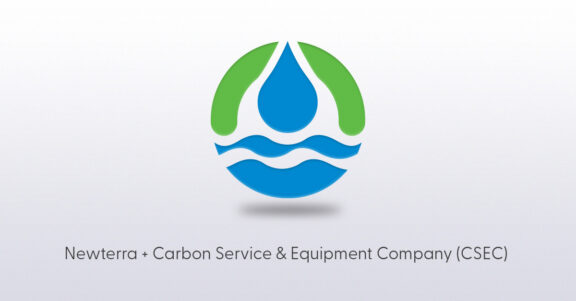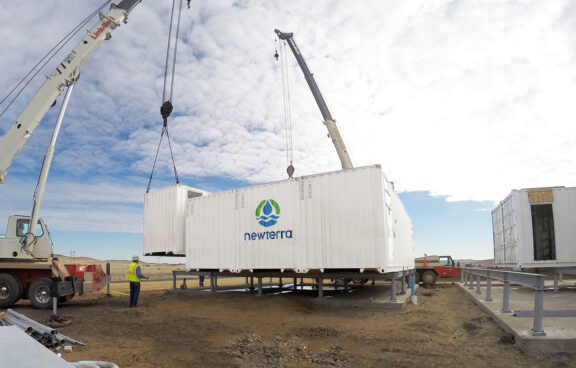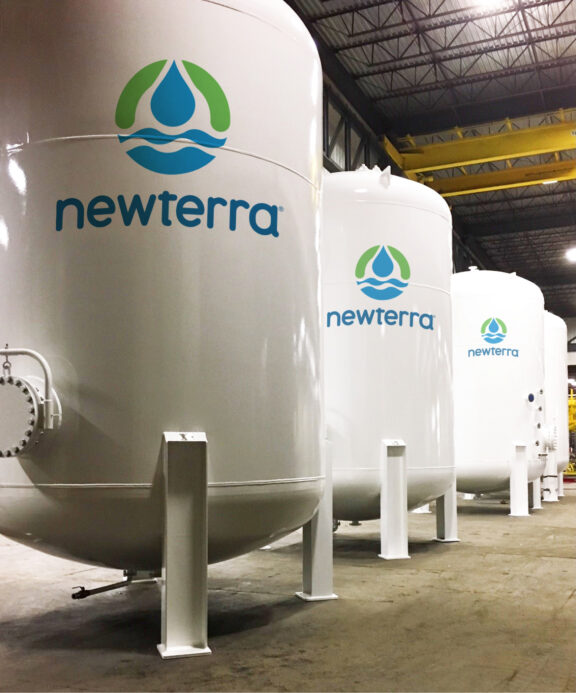8 Tips for a Successful PFAS Removal Study
Written by: Nathan Smith, SVP, Marketing & Lifecycle Leader – Newterra
In recent years, the urgency to address per- and polyfluorinated substances (PFAS) in our water systems has grown exponentially. As these “forever chemicals” come under increased scrutiny due to their potential health impacts and persistence in the environment, water treatment plants (WTPs) face the challenge of effectively removing them. With evolving regulations and a myriad of treatment options available, WTPs need a clear roadmap to navigate this complex landscape. This article provides eight essential tips to guide a successful PFAS removal study, ensuring both compliance and the safety of communities served.
1. Stay Informed on the Regulatory Landscape
The world of PFAS regulations is dynamic, with both federal and state-level guidelines continuously evolving. It’s imperative for WTPs to stay abreast of the latest regulatory changes. The U.S. EPA, for instance, has been active in setting advisory limits and proposing regulations, but these can differ significantly from state-imposed standards. Regularly monitoring regulatory bodies, attending industry seminars, and joining professional networks can help WTPs stay informed. Being proactive in understanding these regulations not only ensures compliance but also aids in anticipating future changes, allowing WTPs to be better prepared.
2. Baseline Data Collection and Monitoring
Before embarking on any treatment initiative, WTPs must have a clear understanding of their current PFAS levels. Comprehensive baseline data collection is crucial. This involves regular testing and monitoring of water sources to determine the concentration and types of PFAS present. With PFAS encompassing a vast group of compounds, pinpointing specific chemicals like PFOA and PFOS can provide more targeted treatment strategies. Moreover, continuous monitoring post-treatment ensures that the systems are effective and that no secondary contamination occurs. Investing in advanced analytical tools and partnering with accredited laboratories can enhance the accuracy and reliability of data collection efforts.
3. Evaluate Cost Implications and Financial Planning
Navigating the PFAS removal landscape isn’t just about technical solutions; it’s also a financial endeavor. WTPs must consider both the initial capital expenditure (CAPEX) and the ongoing operational costs of the chosen treatment technologies. While some solutions might seem cost-effective upfront, their long-term maintenance and replacement costs could be substantial. For instance, while reverse osmosis (RO) might offer effective PFAS removal, its energy requirements can lead to higher operational costs. It’s crucial to conduct a thorough cost-benefit analysis, factoring in potential future costs, especially if regulations become more stringent. Budgeting for unforeseen expenses and securing potential funding or grants can also provide financial flexibility
4. Choose the Right Treatment Technology
Selecting the appropriate treatment technology is pivotal. Granular activated carbon (GAC), ion exchange (IX), and reverse osmosis (RO) are among the leading choices. Each has its strengths and potential challenges. For instance, GAC is particularly effective for water sources with high levels of total organic carbon (TOC) without interference from total dissolved solids (TDS). However, the choice isn’t solely about the technology’s efficacy. The water source’s chemistry plays a significant role. Contaminants like sulfates, nitrates, and TOC can impact the performance of IX systems, necessitating pre-treatment measures. WTPs must also consider the scalability of the chosen technology, especially if they anticipate increased demand in the future. Collaborating with experts and conducting pilot studies can aid in making an informed decision.
5. Engage with Stakeholders and the Community
A successful PFAS removal initiative is a collaborative effort. Engaging with key stakeholders, from regulators and laboratories to technology vendors, ensures a holistic approach. Regular communication with local, state, and federal agencies can ensure compliance and provide insights into potential regulatory shifts. Building a rapport with accredited laboratories can expedite testing processes and offer cost benefits. Moreover, involving the community in the decision-making process fosters trust and ensures transparency. Regular updates, town hall meetings, and feedback sessions can keep the public informed and invested in the project’s success.
6. Plan for Long-Term Resilience and Maintenance
Ensuring the longevity and effectiveness of a PFAS removal system goes beyond its initial implementation. WTPs must have a robust maintenance plan in place. This includes regular system checks, timely replacements, and upgrades as technology advances. As PFAS research progresses, new removal techniques or more efficient versions of existing technologies might emerge. Being adaptable and open to these advancements ensures that the treatment process remains state-of-the-art. Additionally, contingency plans for potential system failures or unforeseen challenges can prevent prolonged downtimes and ensure continuous water supply.
7. Select the Right Technology Partner
The complexity of PFAS removal requires expertise. While WTPs have skilled personnel, partnering with a specialized technology provider can make a significant difference. These partners bring in-depth knowledge, research, and experience to the table. When selecting a partner, consider their track record, the technologies they offer, and their responsiveness to unique challenges. A good partner will not just provide a solution but will also offer training, support, and insights into best practices. They can also assist in navigating regulatory challenges and optimizing the system for maximum efficiency.
8. Stay Proactive and Prioritize Safety
The ultimate goal of any PFAS removal initiative is to ensure the safety and well-being of the community. Proactive measures, such as regular water quality checks, public awareness campaigns, and emergency response plans, can make a difference. It’s essential to prioritize safety in all operations, from handling chemicals to disposing of waste. Ensuring that the treated water meets or exceeds all safety standards is paramount. Regular audits, safety drills, and continuous training for staff can further enhance the safety quotient.
Conclusion:
Addressing the challenge of PFAS in our water systems is a multifaceted endeavor. By following these eight tips, WTPs can navigate the complexities of PFAS removal with confidence and clarity. While the journey might be intricate, the reward—a safe, clean water supply for our communities—is invaluable. As regulations evolve and technologies advance, staying informed, proactive, and collaborative will ensure that WTPs remain at the forefront of this crucial mission.
Your Next Step:
Navigating the intricacies of PFAS removal can be daunting, but you don’t have to face it alone. Newterra’s team of experts is ready to guide you every step of the way, ensuring that your community benefits from the safest and most efficient water treatment solutions. Don’t leave the health of your community to chance.
Act now. Reach out to a Newterra expert for a personalized consultation. Together, we can ensure a cleaner, safer water future for all.
Key Takeaways:
- Regulatory Landscape: PFAS regulations are continuously evolving at both federal and state levels. Staying updated ensures compliance and helps anticipate future changes.
- Data Collection: Comprehensive baseline data collection and continuous monitoring are essential to understand current PFAS levels and the effectiveness of treatment systems.
- Financial Planning: Consider both the initial and ongoing costs of treatment technologies. Conduct a thorough cost-benefit analysis to ensure long-term financial viability.
- Treatment Technology: The choice of treatment technology, whether GAC, IX, or RO, should be based on the water source’s chemistry and the specific needs of the WTP.
- Stakeholder Engagement: Collaborate with regulators, laboratories, technology vendors, and the community for a holistic and successful PFAS removal initiative.
- Maintenance and Resilience: A robust maintenance plan ensures the longevity and effectiveness of the PFAS removal system. Stay adaptable to technological advancements.
- Choosing a Technology Partner: Partnering with a specialized technology provider brings expertise, support, and insights, ensuring the success of the PFAS removal initiative.
- Safety First: Prioritize safety in all operations. Regular audits, safety drills, and training enhance the safety quotient and ensure the well-being of the community.


